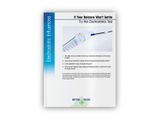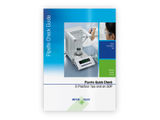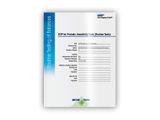To use all functions of this page, please activate cookies in your browser.
my.chemeurope.com
With an accout for my.chemeurope.com you can always see everything at a glance – and you can configure your own website and individual newsletter.
- My watch list
- My saved searches
- My saved topics
- My newsletter
Hydrophilic-lipophilic balanceThe Hydrophilic-lipophilic balance of a surfactant is a measure of the degree to which it is hydrophilic or lipophilic, determined by calculating values for the different regions of the molecule, as described by Griffin in 1949[1] and 1954.[2] Other methods have been suggested, notably in 1957 by Davies[3]. Additional recommended knowledgeGriffin's methodGriffin's method for non-ionic surfactants as described in 1954 works as follows: HLB = 20 * Mh / M where Mh is the molecular mass of the hydrophilic portion of the Molecule, and M is the molecular mass of the whole molecule, giving a result on an arbitrary scale of 0 to 20. An HLB value of 0 corresponds to a completely hydrophobic molecule, and a value of 20 would correspond to a molecule made up completely of hydrophilic components. The HLB value can be used to predict the surfactant properties of a molecule:
Davies' methodIn 1957, Davies suggested a method based on calculating a value based on the chemical groups of the molecule. The advantage of this method is that it takes into account the effect of strongly and less strongly hydrophilic groups. The method works as follows: HLB = 7 + m * Hh + n * Hl with: m - number of hydrophilic groups in the molecule Hh - Value of the hydrophilic groups n - Number of lipophilic groups in the molecule Hl - Value of the lipophilic groups References
|
| This article is licensed under the GNU Free Documentation License. It uses material from the Wikipedia article "Hydrophilic-lipophilic_balance". A list of authors is available in Wikipedia. |
- Quand les particules quantiques volent comme des abeilles - Un simulateur quantique donne un aperçu de la dynamique des systèmes quantiques complexes
- Réduction efficace du dioxyde de carbone sous la lumière visible grâce à un nouveau catalyseur peu coûteux - "Nous pensons que notre étude offre une opportunité sans précédent de développer une nouvelle classe de photocatalyseurs peu coûteux pour la réduction du CO₂, composés d'éléments abondants sur terre."







